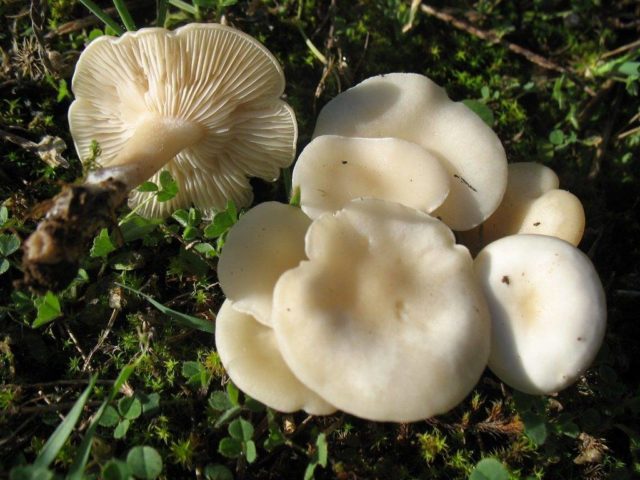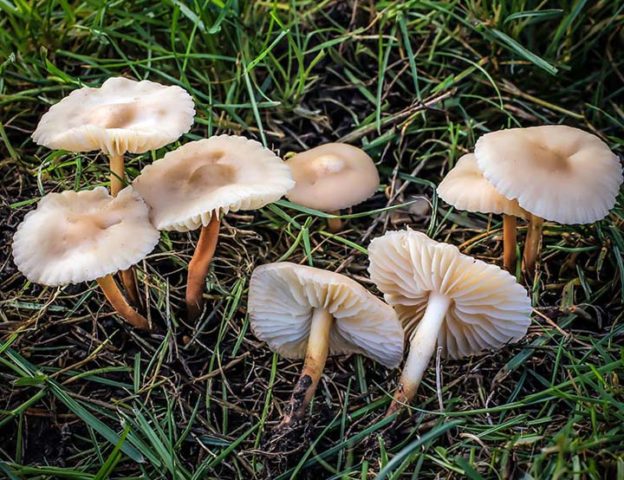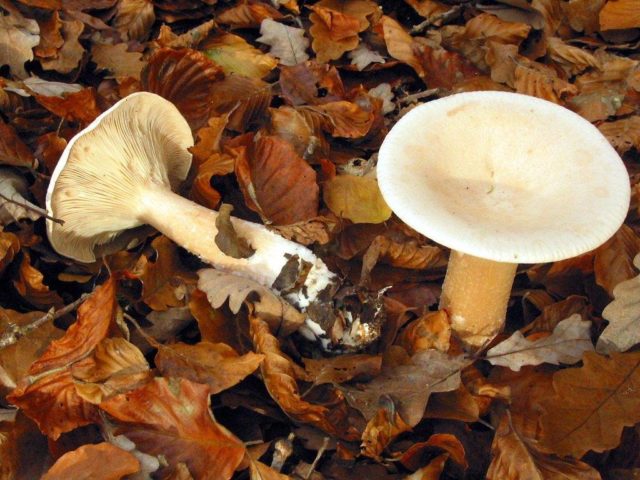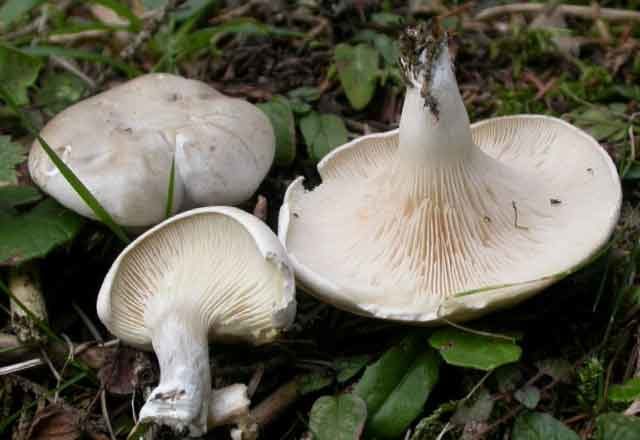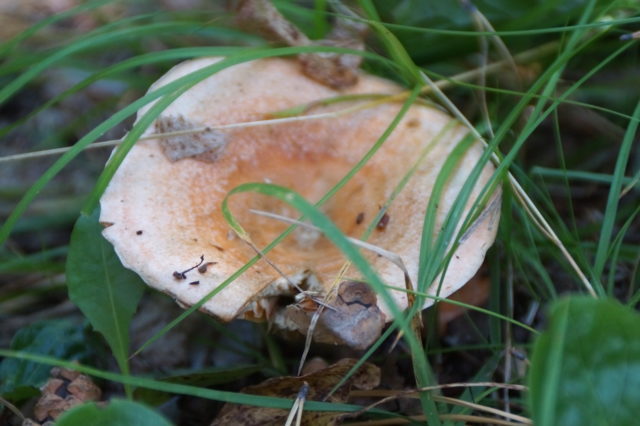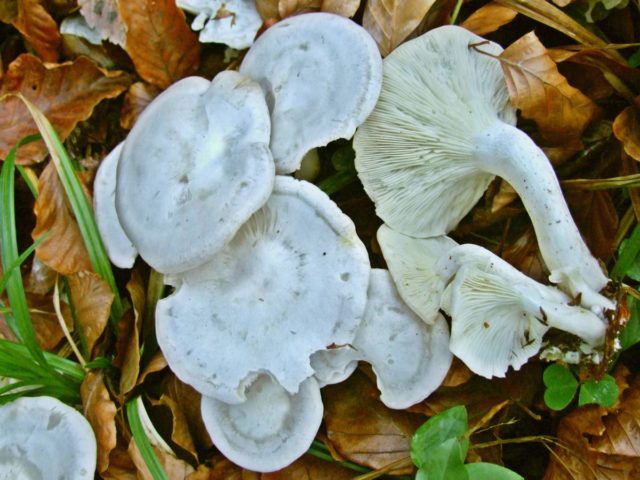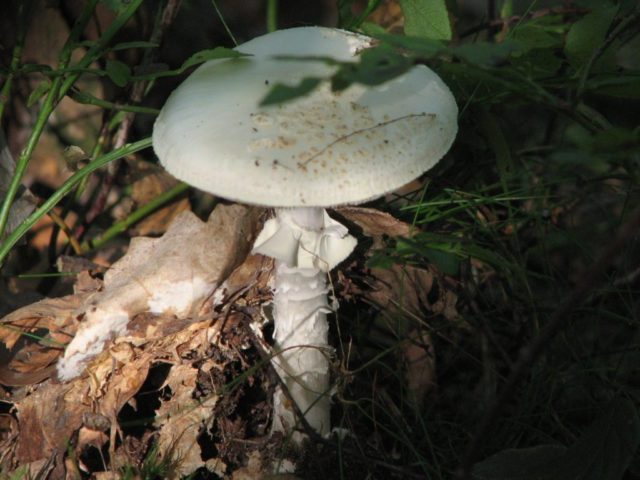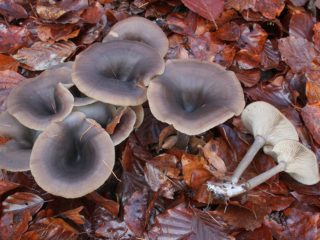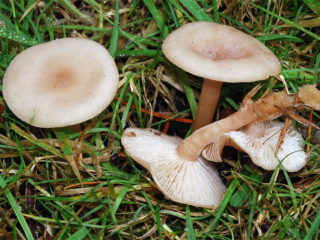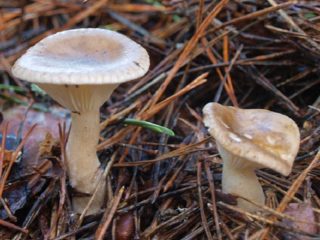Content
Reddish talker is a poisonous mushroom, which is often confused with edible representatives of the same genus, or with honey mushrooms. Some mushroom pickers believe that whitish and reddish talkers are different mushrooms, but these are only synonyms. Reddish has several names: whitish, furrowed, bleached, discolored.The reddish talker belongs to the department Basidiomycota, family Tricholomataceae, genus Govorushka or Clitocybe. There are more than 250 edible and poisonous representatives in the genus. About 60 species are known in Russia, which are difficult for novice mushroom pickers to distinguish.
Where do reddish talkers grow?
White talker (clitocybe dealbata) is distributed throughout the world, growing in deciduous, coniferous and mixed forests of Europe, North America, the European part of Russia, Crimea, Western and Eastern Siberia, Primorye, China. Found in grass in forest clearings, city parks, industrial zones, clearings and forest edges. Forms an alliance with the roots of trees, supplying them with minerals.
It grows actively from mid-July to November, creating groups in the form of even circles, which are called “witches”. But this has nothing to do with magic; the poisonous whitish talker sprays spores in a circle. Loves an abundance of moss and fallen leaves, moist soil and sunny places.
What whitish talkers look like
At first, scientists divided the whitish talker into 2 separate species:
- with a pinkish cap, plates of identical color and a short stem;
- with a gray cap and an elongated stem.
However, after several tests and observations of the reddish ones, scientists came to the conclusion that the color changes depending on the humidity and degree of wetting of the mushroom. Both types were combined into one.
The whitish talker is short. The thin cylindrical stalk grows up to 2-4 cm. In small mushrooms it is dense and elastic, with age it becomes hollow and narrows to 0.8 cm in diameter. It darkens when pressed.
The cap of the reddish talker is medium or small in size, up to 4 cm in diameter; in young specimens the tip is convex, with the edges bent to the stem, with age it is more spread out and depressed in the center. The edges of the cap of an adult furrowed talker are irregular in shape, the color is snow-white, sometimes pinkish-brown in the center, less often ocher. With age, a powdery coating, gray spots and cracks appear on the surface of the cap. When cut, the light flesh does not change color.
Young talkers have pinkish plates, which become white as they grow. In rainy weather the cap is sticky and slippery, in dry and hot weather it is velvety.
The fleshy cap smells pleasantly of leaves, freshly cut wood or flour, but the smell, like the pronounced mushroom taste, is deceptive. It is advisable to familiarize yourself with the photo and description of the whitish talker in advance so as not to confuse it with anything.
Is it possible to eat reddish talkers?
After muscarine enters the human body, poisoning occurs within 15-20 minutes, but sometimes symptoms appear after several hours or even days. The venom of the whitish talker is resistant to heat treatment. Contrary to the opinion of some mushroom pickers, prolonged cooking does not destroy muscarine. Eating reddish mushrooms is life-threatening.
How to distinguish whitish talkers
It has been noticed that the grooved talker can emit a faint emerald glow in the dark, but this sign will not help mushroom pickers identify it during the day.
The danger of whitish is in its similarity to edible mushrooms:
- meadow honey fungus with a beige or light brown cap, sparse plates and almond aroma;
- tucked talker (red) with a flesh-colored funnel-shaped cap with a tubercle in the center and a thick stem;
- hanging with a white cap and pinkish plates, growing near trees;
- saffron milk cap, brighter than the reddish talker, but similar in color.
There are also poisonous counterparts:
- leaf-loving talker, growing exclusively in the forest, characterized by its large size;
- pale (white) grebe - record holder for toxicity, distinguished by a skirt, but young grebes do not have one. Eating 1/3 of a cap is enough to cause death; a whole family can be poisoned to death by a whole mushroom.
If there is any doubt about the edibility of a found mushroom, there is no need to put it in the basket.
Symptoms of poisoning
A person who has been poisoned by reddish talkers develops characteristic symptoms one after another:
- increased salivation and sweating;
- severe cramps in the stomach and intestines;
- diarrhea;
- vomit;
- facial redness;
- disturbance of heartbeat rhythm;
- significant constriction of the pupils, blurred vision;
- decreased blood pressure;
- bronchospasms and other breathing disorders;
- convulsions.
The whitish talkers do not act on the central nervous system with their toxic composition, but can cause severe disturbances in the functioning of the peripheral nervous system. As a result of a sharp contraction of the uterus and bladder, involuntary urination is possible, and pregnant women are at risk of miscarriage or premature birth.
Consumption with alcohol will worsen the situation, which can be fatal.
Deaths from eating reddish talker are rare.Due to untimely seeking help from doctors, a person may die from dehydration, sudden cardiac arrest, kidney failure, or bronchospasm. It is especially dangerous to eat them for people suffering from asthma and heart disease.
In the hospital, for poisoning with mushrooms with muscarine, an antidote is given - “Atropine” or other M-anticholinergics.
First aid for poisoning
Before doctors arrive, the victim needs to provide first aid:
- provide plenty of fluids (at least 2 liters of water);
- wash and induce vomiting in the victim. The procedure is carried out until all the liquid leaving the stomach reaches transparency;
- give activated carbon or another sorbent agent (“Sorboxan”, “Enterosgel”, “Filtrum STI”);
- to stimulate the heart, give the poisoned person “Validol” or “Corvalol”.
If there are no contraindications to taking Atropine, you can block the poison with this drug. Only 0.1 g of the blocker neutralizes the effect of muscarine. But doctors do not recommend giving any medications, especially antispasmodics and painkillers, so that specialists can correctly diagnose.
Conclusion
The reddish (whitish) talker causes poisoning every year. Edible specimens are confused with inedible and poisonous ones. It is better to refuse to collect unfamiliar mushrooms and not taste them.
